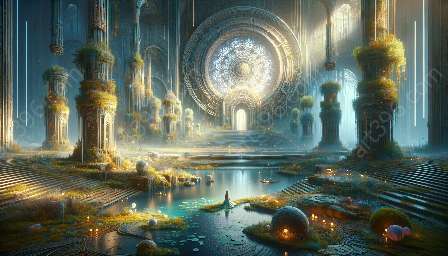Character design in concept art is a pivotal aspect of storytelling, allowing artists to create compelling and authentic personas. In this exploration, we delve into the profound relationship between psychology, personality, and character design, offering insights and practical strategies for character development.
The Role of Psychology in Character Design
Understanding human psychology is essential for creating well-rounded and relatable characters. By taking into account psychological nuances, such as behavior, emotions, and cognition, character designers can breathe life into their creations.
Emotional Archetypes and Visual Representation
Emotions form a significant part of human behavior, and incorporating emotional archetypes into character design can enhance the narrative impact. The visual representation of emotions through facial expressions, body language, and color schemes can convey intricate psychological traits.
- Utilizing body language to express confidence, vulnerability, or determination can instantly communicate aspects of a character's personality to the audience.
- Color psychology and its influence on mood can be artfully employed to evoke specific emotional responses from viewers, creating a deeper connection to the characters.
Personality Traits and Storytelling
Incorporating personality traits into character design enriches the narrative by adding depth and complexity. By drawing from established psychological models, such as the Big Five personality traits, artists can create characters with multidimensional personalities.
- Exploring the dimensions of openness, conscientiousness, extraversion, agreeableness, and neuroticism allows for a diverse range of character personalities, each with their unique motivations and conflicts.
- Adopting the Myers-Briggs Type Indicator (MBTI) or other personality frameworks enables the creation of characters with distinct behavioral patterns and decision-making processes.
Understanding the Audience and Cultural Signifiers
Character design is shaped by the intended audience and cultural context, making it crucial to consider how psychological and personality elements resonate with diverse viewers.
Creating Relatable Characters
By aligning character traits with archetypal personalities, artists can create relatable characters that resonate with a broad audience. Understanding universal psychological concepts, such as hero journeys, anti-heroes, and moral dilemmas, allows for the development of characters that speak to human experiences.
Cultural Influences and Symbolism
Incorporating cultural signifiers and symbols into character design adds layers of depth and authenticity. By understanding the psychological impact of cultural symbolism, artists can imbue their characters with meaningful representation, fostering connections with diverse audiences.
Practical Applications and Concept Art
Integrating psychology and personality into character design requires a blend of creativity and methodical approach. Concept art serves as the platform for translating psychological insights into visual storytelling, offering a bridge between imagination and tangible representation.
Visual Development and Iterative Design
Concept art facilitates the iterative exploration of character psychology and personality, allowing artists to refine their visual representations based on psychological depth. This iterative process enables the alignment of character traits with visual cues, ensuring a cohesive and impactful portrayal.
Visual Language and Symbolic Representation
Concept art leverages visual language to infuse characters with psychological and personality elements. Symbolic representation, such as the use of motifs, props, and visual metaphors, can encapsulate underlying psychological themes and character motivations.
Conclusion
The fusion of psychology and personality in character design for concept art empowers artists to craft immersive and resonant narratives. By delving into the intricacies of human behavior and traits, character designers can create captivating personas that draw audiences into compelling and authentic stories.

